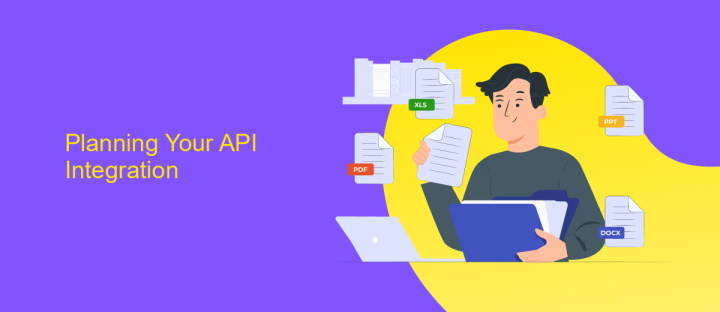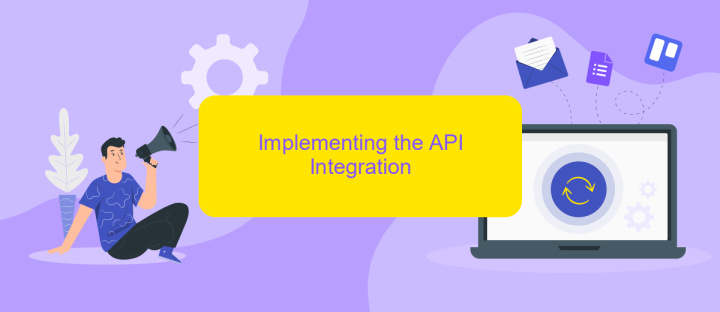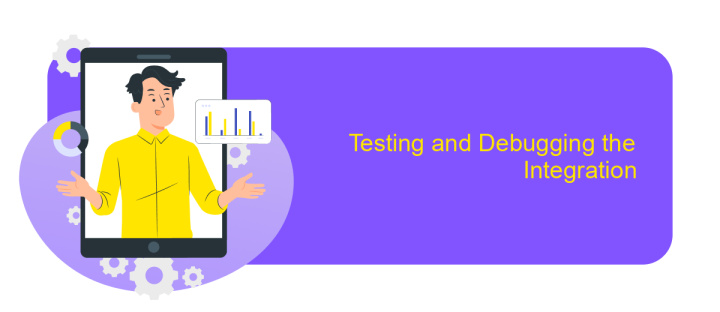External API Integration
In today's digital landscape, external API integration has become a crucial component for businesses seeking to enhance functionality and streamline operations. By connecting with third-party services, companies can access a wealth of data and features, enabling them to innovate and stay competitive. This article explores the fundamentals of external API integration, its benefits, and best practices for seamless implementation in various business environments.
Understanding External APIs and Their Benefits
External APIs, or Application Programming Interfaces, are tools that allow different software applications to communicate with each other. They enable developers to access specific features or data from other applications without needing to understand their internal workings. This facilitates seamless integration and enhances the functionality of an application by leveraging existing services.
- Streamlined development process: APIs allow developers to integrate pre-built functionalities, saving time and effort.
- Improved user experience: By connecting to external services, applications can offer richer features and data.
- Scalability: APIs enable applications to grow by incorporating third-party services as needed.
- Innovation: Access to diverse APIs encourages creative solutions and new functionalities.
Understanding and utilizing external APIs can significantly enhance the capabilities of a software application. They offer a bridge to a wide array of services and data, allowing developers to focus on creating unique features for their users. By using APIs, companies can stay competitive in a rapidly evolving technological landscape, delivering advanced solutions efficiently and effectively.
Planning Your API Integration

Before diving into API integration, it's crucial to establish a clear plan. Start by identifying the specific objectives you aim to achieve through the integration. Understanding your goals will guide you in selecting the right API and ensure the integration aligns with your business needs. Next, evaluate the technical requirements and constraints of both your system and the API. Consider factors such as data formats, authentication methods, and rate limits. Properly assessing these elements will help you anticipate potential challenges and streamline the integration process.
Once you've outlined your objectives and technical requirements, choose the right tools to facilitate the integration. Platforms like ApiX-Drive can simplify this process by offering user-friendly interfaces and automation features, reducing the need for extensive coding. ApiX-Drive allows seamless connections between various applications, saving time and resources. Ensure you also plan for testing and monitoring to promptly address any issues that may arise post-integration. By meticulously planning your API integration, you can enhance operational efficiency and drive better business outcomes.
Implementing the API Integration

Integrating an external API into your system can significantly enhance its functionality and user experience. Before starting, ensure you have a clear understanding of the API's documentation, which provides details on endpoints, authentication methods, and data formats. Establishing a secure connection and handling potential errors are crucial steps in the process. Begin by setting up a development environment to test the API integration without affecting live data.
- Read and understand the API documentation thoroughly.
- Set up the development environment for testing purposes.
- Implement authentication to ensure secure access to the API.
- Write code to interact with the API endpoints as required.
- Test the integration to handle errors and ensure data accuracy.
- Deploy the integration to the production environment.
Once the integration is complete, it's important to monitor the system for any issues that may arise. Regularly check for updates to the API, as changes can impact your integration. By following these steps, you can successfully implement an external API integration that enhances your application's capabilities and provides a better user experience.
Testing and Debugging the Integration

Testing and debugging an external API integration is crucial to ensure seamless functionality and reliability. Start by setting up a controlled environment that replicates real-world conditions. This allows you to test the integration without affecting live data or user experience. Utilize sandbox environments provided by the API vendor to simulate various scenarios and edge cases.
Once the environment is ready, develop a comprehensive test suite. Include unit tests to verify individual components and integration tests to evaluate the interaction between your system and the API. Automated tests can help identify issues quickly and ensure consistent performance over time.
- Check API response codes and handle errors gracefully.
- Validate data formats and ensure data integrity.
- Monitor API request limits to avoid throttling.
- Use logging to track API interactions for easier debugging.
After testing, focus on debugging any issues that arise. Analyze error logs and API documentation to identify potential misconfigurations or misunderstandings. Collaborate with the API provider's support team if necessary to resolve complex issues. Continuous testing and monitoring are essential to maintaining a robust and efficient integration.
Maintaining and Optimizing the Integration
Maintaining and optimizing an external API integration requires ongoing attention to ensure seamless operation and performance. Regularly monitor the API's performance metrics, such as response time and error rates, to identify potential issues early. Implement automated alerts to notify your team of any anomalies. Additionally, keep your integration updated with the latest API versions to leverage new features and improvements, while ensuring compatibility with existing systems.
Optimization involves refining the integration for efficiency and scalability. Utilize tools like ApiX-Drive to automate data flow between applications, reducing manual intervention and minimizing errors. Conduct periodic code reviews to identify and eliminate bottlenecks, ensuring the integration runs smoothly under varying loads. Furthermore, gather feedback from end-users to understand their experience and identify areas for improvement. By continuously refining your integration strategy, you can enhance performance, reliability, and user satisfaction.
FAQ
What is an external API integration?
Why is external API integration important?
How can I ensure the security of my external API integrations?
What are some challenges associated with external API integration?
How can I simplify the process of external API integration?
Apix-Drive is a universal tool that will quickly streamline any workflow, freeing you from routine and possible financial losses. Try ApiX-Drive in action and see how useful it is for you personally. In the meantime, when you are setting up connections between systems, think about where you are investing your free time, because now you will have much more of it.

